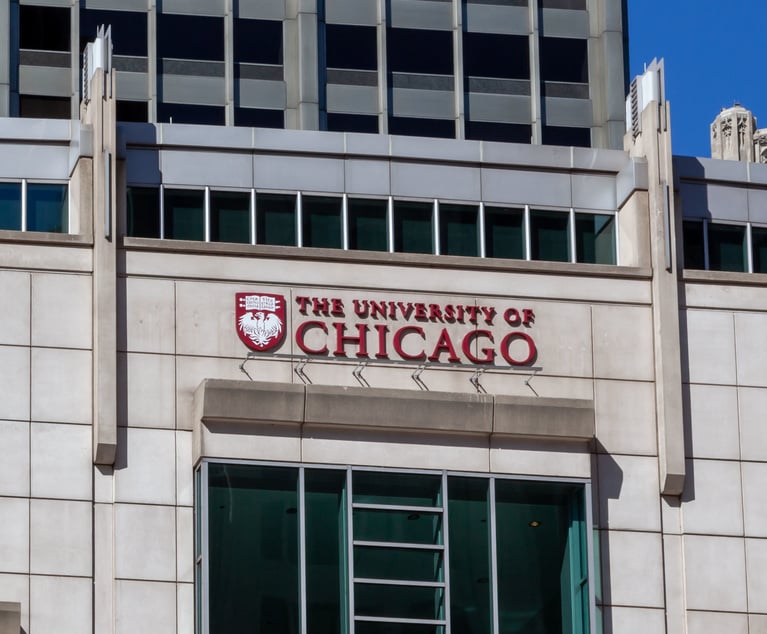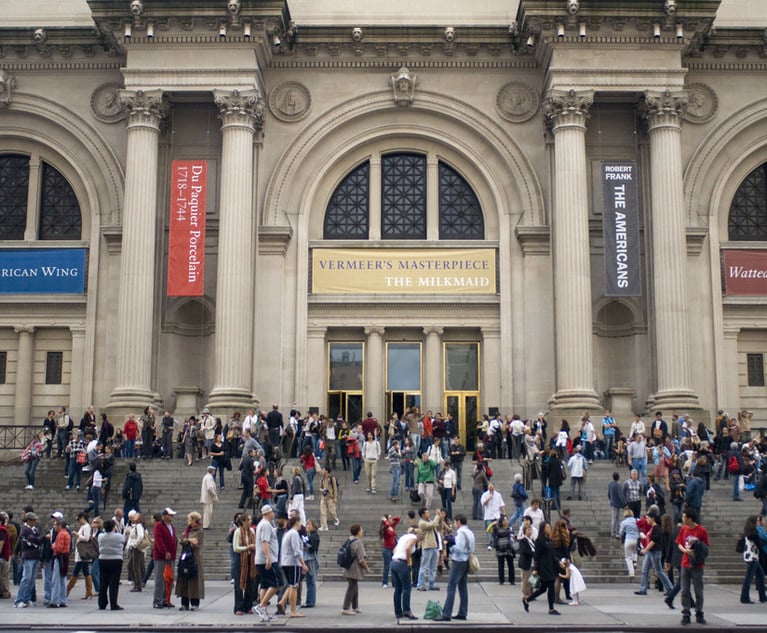Help Wanted: Law Schools Need Professors
A decline in entry-level, tenure-track law teaching jobs in years past as well as an increase in the credentials sought out by law schools have prompted far fewer people to apply for new law professor positions.
October 03, 2019 at 08:00 PM
4 minute read
 Image: Shutterstock.
Image: Shutterstock.
Anyone want to become a law professor? Anyone?
The largest annual entry-level law school hiring event kicks off Friday in Washington, but the scene at the host hotel will likely be more subdued than the frenzied atmosphere from a decade earlier. The number of candidates vying to become doctrinal legal academics is about half what it was 10 years ago, a phenomenon observers attribute to an overall drop-off in law school hiring as well as an increase in the credentials schools seek in new professors.
At the same time, more law schools are hiring new faculty this year, according to the Association of American Law Schools, meaning it's something of a buyer's market for would-be profs. In fact, 111 law schools have advertised open positions this cycle, the highest number in at least four years. Last year, 90 schools posted available jobs in advance of the hiring conference.
The bulk of hiring for entry-level, tenure-track positions occurs at the AALS' Faculty Recruitment Conference, which takes place each October. Aspiring law professors submit a form on the association's Faculty Appointments Register (FAR) in hopes of being invited for 30-minute interviews with hiring committees at the conference. Candidates that pass that first hurdle are then invited to campus to deliver what is known as a job talk.
Just 334 people submitted FAR forms in the first distribution this year, down from 662 in 2010, according to data compiled by Sarah Lawsky, a professor at Northwestern University Pritzker School of Law who tracks the law school hiring market at PrawfsBlawg. (There are two more FAR distributions annually, but the first is by far the largest and most closely watched. In total, 411 candidates have applied for positions so far, according to the AALS. That's a 50% decrease from nine years ago.)
"I don't think it's that nobody wants to be a law professor anymore," Lawsky said in an interview Thursday. "I think that people are accurately assessing what qualifications they need to have. My guess is that the marginal people who aren't applying now wouldn't have gotten jobs. Way more people apply than get jobs."
Those marginal candidates likely have a better sense that they don't have the qualifications to get hired, thus aren't bothering to throw their hat into the ring, she said.
Lawsky's data highlights the increasing importance of fellowships and doctorates in landing a law teaching job, credentials that weren't required back in 2006 when she was on the faculty market. Among the 82 new tenure-track professors hired in 2019, 78% had a fellowship on their resume and 66% had an advanced degree in addition to a law degree.
The AALS hiring conference has been much more empty in recent years, Lawsky added, in part because many campuses curtailed professor hiring amid the sustained downturn in enrollment that began in 2011. Schools hired 155 new professors that year, a number that sunk to a low of 62 in 2017. Lawsky's analysis of professor hiring shows that top-tier schools have largely maintained their faculty hiring numbers, while lower-tier schools pulled back dramatically. That makes sense considering that lower-tier schools experienced the biggest enrollment declines and that at least five have shut down altogether.
Meanwhile, the AALS this year launched a new website dedicated to helping aspiring law professors navigate the hiring process.
"The goal of the site is to make the process of obtaining a teaching job as transparent as possible, and to provide useful information to potential candidates," said association spokesman James Greif. "The website explains the faculty recruitment process, provides resources, and includes multimedia interviews with recently hired professors and directors of law school programs for aspiring faculty."
Despite the decline in available tenure-track positions in recent years, the corresponding falloff in job candidates means that the odds of landing a professor gig are roughly in line with what they were before the enrollment crisis. In 2011, 23% of candidates were hired. That fell to 12% in 2014, but ticked up to 24% in 2019, Lawsky's data show. She predicts that the percentage of successful candidates will be about the same during this hiring cycle. The number of law schools hiring at least one new tenure-track professor rose to 60 in 2019, up from a low of 42 in 2017.
"My sense is that we're in a new normal," Lawsky said. "My guess is that it's going to look a lot like last year."
This content has been archived. It is available through our partners, LexisNexis® and Bloomberg Law.
To view this content, please continue to their sites.
Not a Lexis Subscriber?
Subscribe Now
Not a Bloomberg Law Subscriber?
Subscribe Now
NOT FOR REPRINT
© 2025 ALM Global, LLC, All Rights Reserved. Request academic re-use from www.copyright.com. All other uses, submit a request to [email protected]. For more information visit Asset & Logo Licensing.
You Might Like
View All
University of Chicago Accused of Evicting Student for Attending Gaza-Israel Protest
3 minute read
Sanctioned Penn Law Professor Amy Wax Sues University, Alleging Discrimination
5 minute read

The Met Hires GC of Elite University as Next Legal Chief
Trending Stories
- 1'A Death Sentence for TikTok'?: Litigators and Experts Weigh Impact of Potential Ban on Creators and Data Privacy
- 2Bribery Case Against Former Lt. Gov. Brian Benjamin Is Dropped
- 3‘Extremely Disturbing’: AI Firms Face Class Action by ‘Taskers’ Exposed to Traumatic Content
- 4State Appeals Court Revives BraunHagey Lawsuit Alleging $4.2M Unlawful Wire to China
- 5Invoking Trump, AG Bonta Reminds Lawyers of Duties to Noncitizens in Plea Dealing
Who Got The Work
J. Brugh Lower of Gibbons has entered an appearance for industrial equipment supplier Devco Corporation in a pending trademark infringement lawsuit. The suit, accusing the defendant of selling knock-off Graco products, was filed Dec. 18 in New Jersey District Court by Rivkin Radler on behalf of Graco Inc. and Graco Minnesota. The case, assigned to U.S. District Judge Zahid N. Quraishi, is 3:24-cv-11294, Graco Inc. et al v. Devco Corporation.
Who Got The Work
Rebecca Maller-Stein and Kent A. Yalowitz of Arnold & Porter Kaye Scholer have entered their appearances for Hanaco Venture Capital and its executives, Lior Prosor and David Frankel, in a pending securities lawsuit. The action, filed on Dec. 24 in New York Southern District Court by Zell, Aron & Co. on behalf of Goldeneye Advisors, accuses the defendants of negligently and fraudulently managing the plaintiff's $1 million investment. The case, assigned to U.S. District Judge Vernon S. Broderick, is 1:24-cv-09918, Goldeneye Advisors, LLC v. Hanaco Venture Capital, Ltd. et al.
Who Got The Work
Attorneys from A&O Shearman has stepped in as defense counsel for Toronto-Dominion Bank and other defendants in a pending securities class action. The suit, filed Dec. 11 in New York Southern District Court by Bleichmar Fonti & Auld, accuses the defendants of concealing the bank's 'pervasive' deficiencies in regards to its compliance with the Bank Secrecy Act and the quality of its anti-money laundering controls. The case, assigned to U.S. District Judge Arun Subramanian, is 1:24-cv-09445, Gonzalez v. The Toronto-Dominion Bank et al.
Who Got The Work
Crown Castle International, a Pennsylvania company providing shared communications infrastructure, has turned to Luke D. Wolf of Gordon Rees Scully Mansukhani to fend off a pending breach-of-contract lawsuit. The court action, filed Nov. 25 in Michigan Eastern District Court by Hooper Hathaway PC on behalf of The Town Residences LLC, accuses Crown Castle of failing to transfer approximately $30,000 in utility payments from T-Mobile in breach of a roof-top lease and assignment agreement. The case, assigned to U.S. District Judge Susan K. Declercq, is 2:24-cv-13131, The Town Residences LLC v. T-Mobile US, Inc. et al.
Who Got The Work
Wilfred P. Coronato and Daniel M. Schwartz of McCarter & English have stepped in as defense counsel to Electrolux Home Products Inc. in a pending product liability lawsuit. The court action, filed Nov. 26 in New York Eastern District Court by Poulos Lopiccolo PC and Nagel Rice LLP on behalf of David Stern, alleges that the defendant's refrigerators’ drawers and shelving repeatedly break and fall apart within months after purchase. The case, assigned to U.S. District Judge Joan M. Azrack, is 2:24-cv-08204, Stern v. Electrolux Home Products, Inc.
Featured Firms
Law Offices of Gary Martin Hays & Associates, P.C.
(470) 294-1674
Law Offices of Mark E. Salomone
(857) 444-6468
Smith & Hassler
(713) 739-1250








